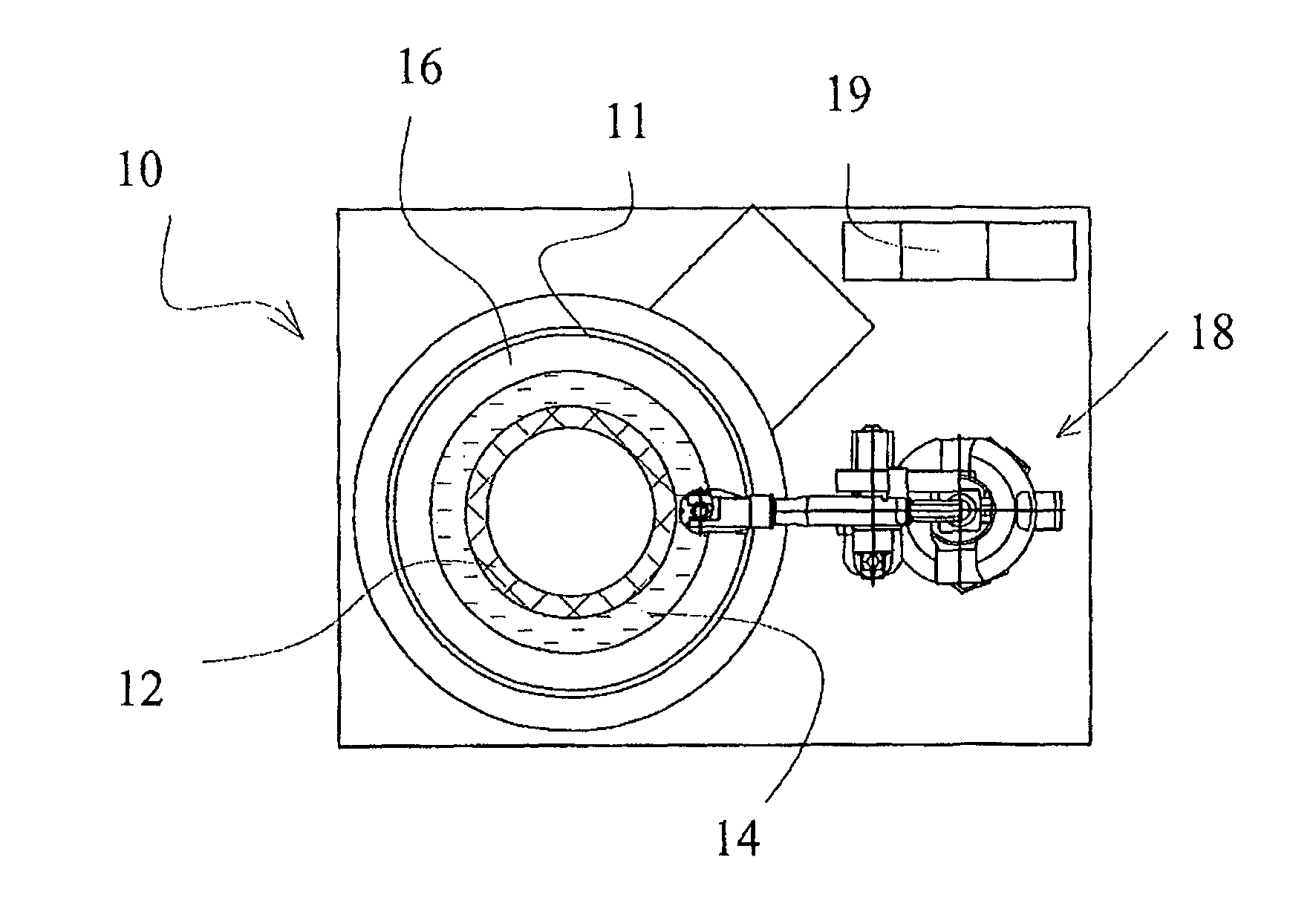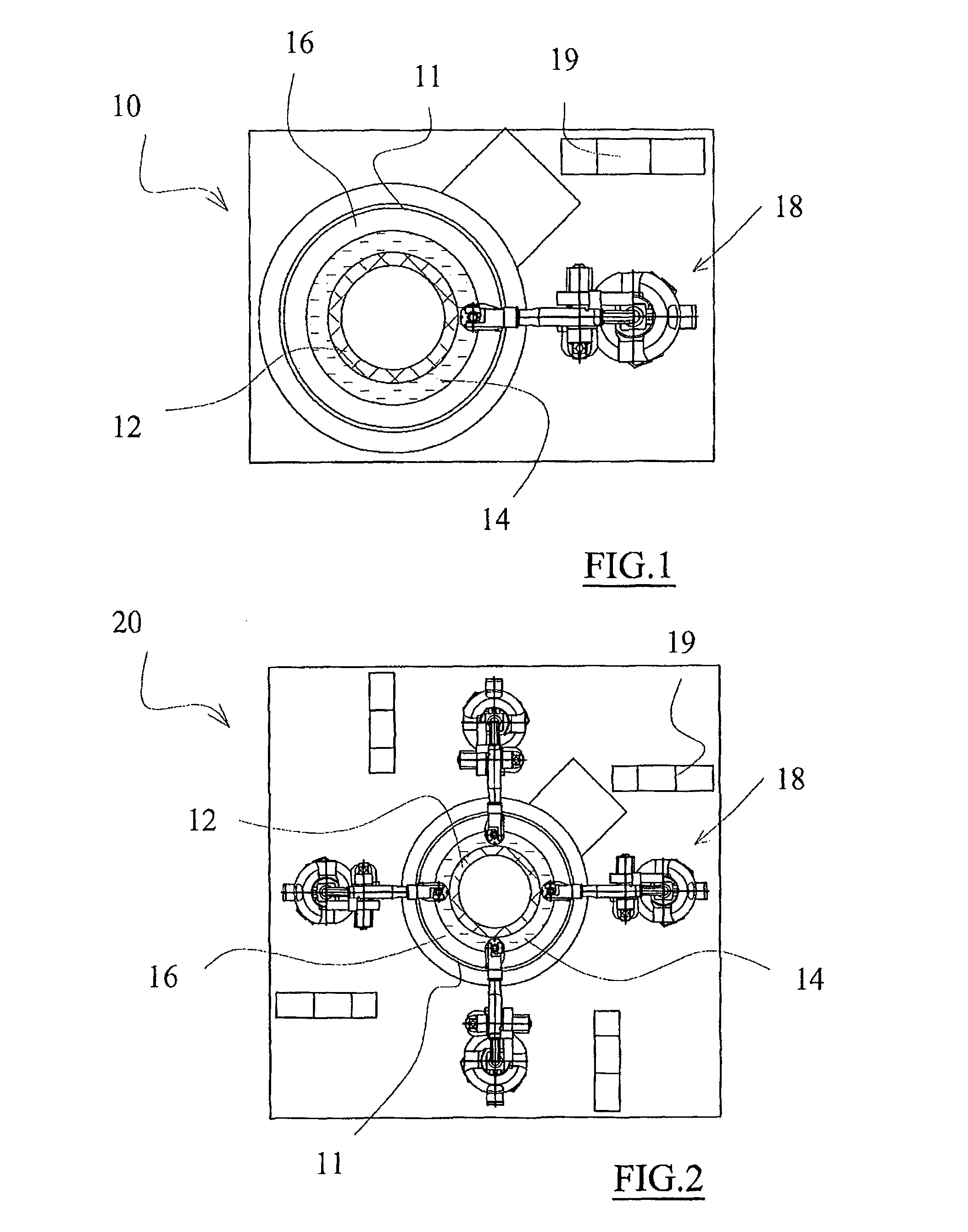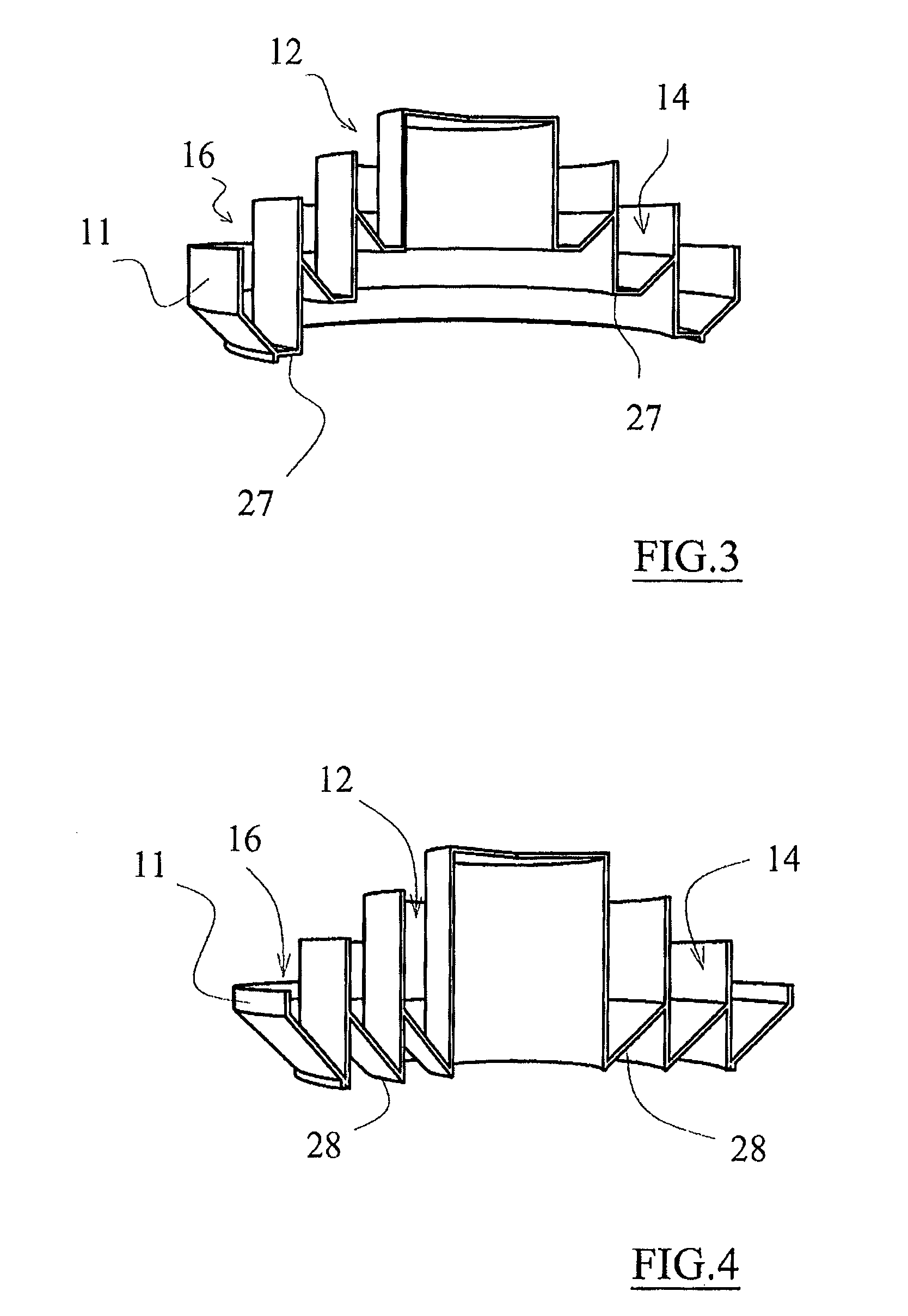Surface flow finishing machine
a technology of surface flow and finishing machine, which is applied in the direction of plane surface grinding machine, metal-working apparatus, manufacturing tools, etc., can solve the problems of difficulty in loading and unloading, large capacity of the machine, and large difficulty in executing barrel by barrel
- Summary
- Abstract
- Description
- Claims
- Application Information
AI Technical Summary
Benefits of technology
Problems solved by technology
Method used
Image
Examples
Embodiment Construction
[0038]In particular, FIG. 1 shows a surface flow finishing machine according to the present invention, generally indicated with reference number 10. It comprises a rotary vat 11 for containing finishing media and a unit for moving pieces comprising at least one mechanical arm for moving the pieces being machined, which in the specific case is constituted by an anthropomorphic robot 18 adapted to pick pieces, whose surfaces should be machined by a bench 19, and rotate them within the rotary vat 11.
[0039]In particular, the rotary vat comprises three separate sections 12,14,16 formed by concentric circular crowns.
[0040]Preferably each of the separate sections 12,14,16 of the rotary vat 11 is adapted to receive a different finishing media.
[0041]FIG. 2 shows—in top view—a second embodiment of the invention which differs from the embodiment of the figure due to the fact that it provides four anthropomorphic robots 18, each adapted to operate at a section of the rotary vat 11.
[0042]Each of...
PUM
 Login to View More
Login to View More Abstract
Description
Claims
Application Information
 Login to View More
Login to View More - R&D
- Intellectual Property
- Life Sciences
- Materials
- Tech Scout
- Unparalleled Data Quality
- Higher Quality Content
- 60% Fewer Hallucinations
Browse by: Latest US Patents, China's latest patents, Technical Efficacy Thesaurus, Application Domain, Technology Topic, Popular Technical Reports.
© 2025 PatSnap. All rights reserved.Legal|Privacy policy|Modern Slavery Act Transparency Statement|Sitemap|About US| Contact US: help@patsnap.com



